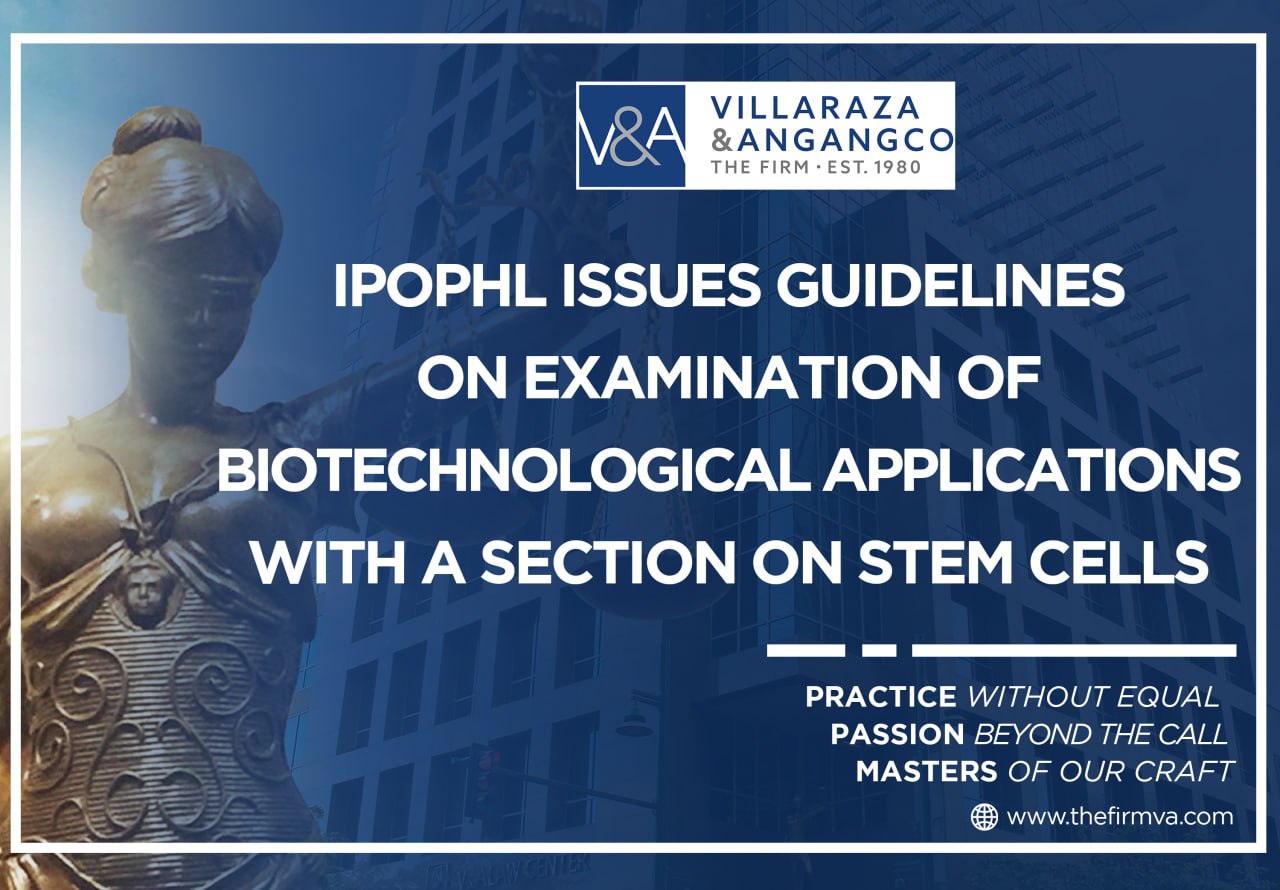

On October 2022, the IPOPHL issued Guidelines on the Examination of Biotechnological Applications (Biotech Guidelines) in line with IPOPHIL’s goal to deliver quality and timely patents and are intended to be adaptable to new knowledge, technologies and trends in the Biotechnology field.
The Biotech Guidelines cover inventions pertaining to Microorganisms, Nucleic Acid and Polypeptides, Antibodies and Plants and Animals, and include a section on Stem Cells which discusses what stem cells are eligible for patenting and which are not patentable. The Biotech Guidelines indicate that the primary consideration for evaluation of eligibility for patenting of stem cells is their source, taking into account whether use of embryo as base material involves destruction of the same. Direct destruction includes isolation of said embryo such that it will no longer develop into a viable organism. In such a case, patentability of stem cells, products and methods of obtaining them may be questioned based on Section 22.6 of the Intellectual Property Code of the Philippines which excludes matter contrary to public order and morality.
The Biotech Guidelines enumerate the embryonic stem cells excluded from patentability, which are those that have been isolated from:
“a) earlier stages of the human embryo up to the fetal stem cells
(approximately 8th-week post-fertilization),
b) aborted fetal stem cells and their derivatives, and
c) primary embryonic stem cell lines directly isolated from the human
embryo.”[i]
Totipotent stem cells, defined under the Biotech Guidelines as “[c]ells that have the capacity to self-renew by dividing and to develop into the three primary germ cell layers of the early embryo and into extra-embryonic tissues such as the placenta”[ii], are excluded from patent protection.
The Biotech Guidelines cite Rule 202(i) of the Revised Implementing Rules and Regulations for Patents, Utility Models and Industrial Design of 2022, which excludes from patent protection “[a]nything which is contrary to public order, health, welfare, or morality, or process or cloning or modifying the germ line genetic identity of humans or animals or uses of the human embryo”. [Emphasis added]. Based on the foregoing, the Biotech Guidelines enumerate biotechnological inventions for which Philippine patents are not to be granted. The Biotech Guidelines further provides illustrative examples and analysis pertaining to patentability of the same.
The Biotech Guidelines also provide for considerations regarding public order and morality, as well as exclusions from patentability of stem cells by other countries’ patent systems, such as those of Serbia, Spain, Sweden, Switzerland, European Patent Office and the United Arab Emirates.
~o0o~
This article is intended for informational purposes only and should not be considered as legal advice.
Author:
Ma. Sophia Editha C. Cruz-Abrenica
For any question or legal concerns regarding Biotechnology Patent Applications, you may contact the author: mc.abrenica@thefirmva.com
[i] Section 4.1.1, Non-Eligible Human Stem Cells, Biotech Guidleines
[ii] Part III, Definitions, Biotech Guidelines.